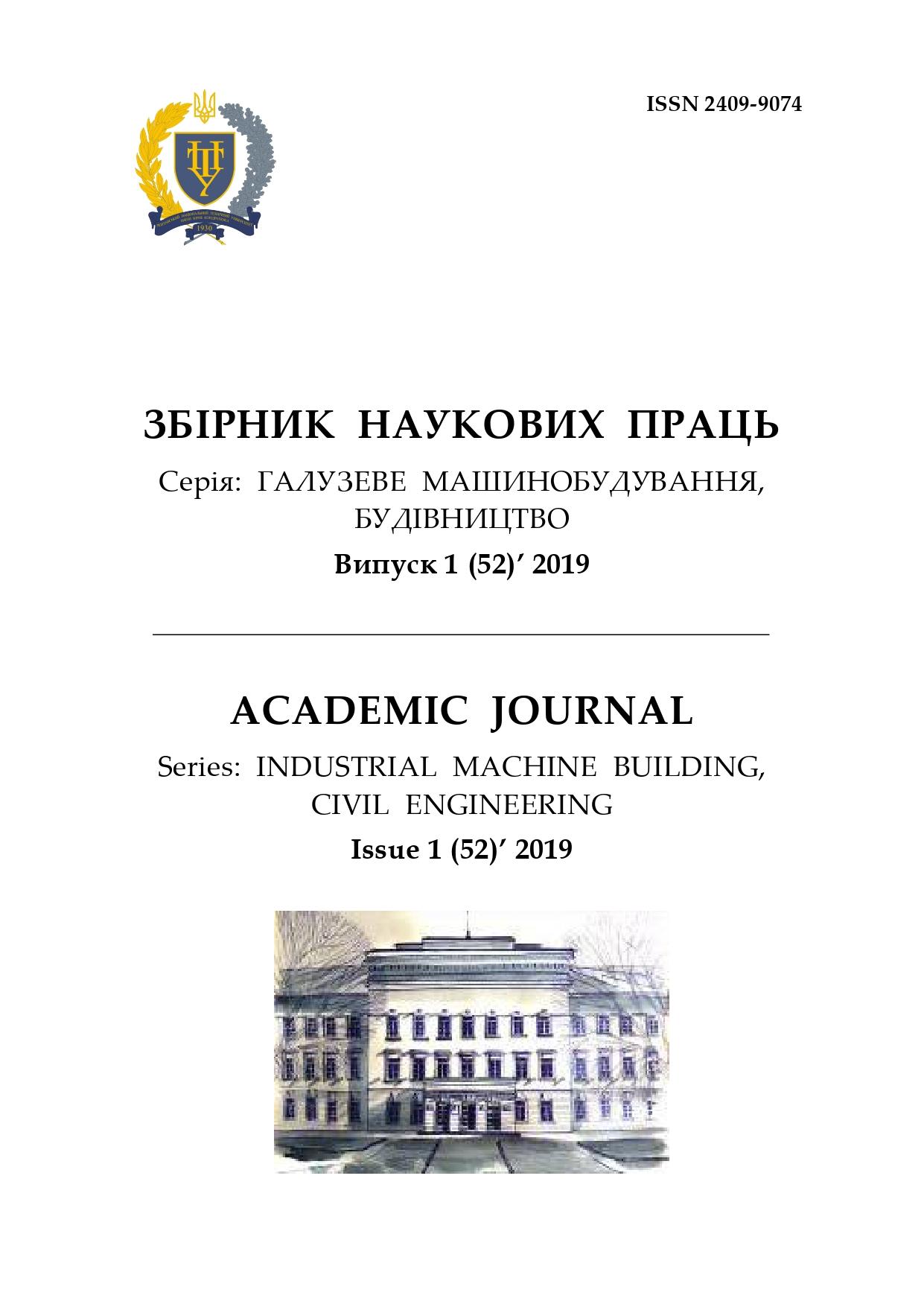The scientific and technical activity module development for the department of structures from metal, wood and plastics
DOI:
https://doi.org/10.26906/znp.2019.52.1698Keywords:
informational intellectual control system, intellectual module, semantic analysis of the text, scientific activityAbstract
The problems of society informational support, which demand the creation of modern information management systems for
different objects were considered. Particular attention was paid to the detailed description and analysis of existing services for
keeping records of scientific activity in higher educational institutions. The necessity of module creating for management the
scientific and technical activities, which will allow to optimize the procedure for conducting reports on scientific, technical
and innovative activities, to expand the possibilities for the results analysis, to ensure transparency and objectivity in the procedure
of evaluating the teachers’ activities, was revealed and explained. The developed sections of the technical enquiry
were given. On the basis of the conducted research the software implemented module for management the scientific and
technical activity of the department.
References
National Law University Yaroslav the Wise. Retrieved
from: http://library.nlu.edu.ua
Scientific Publications. Retrieved from:
International Scientific Conferences. Retrieved from:
Russell S.J. & Norvig P. (2010). Artificial Intelligence:
A Modern Approach. Upper Saddle River. Prentice Hall.
Dmitrenko, T.A., Derkach, T.M., Demidenko, M.I. &
Dmitrenko, A.O. (2017). Development of the automated
information system «Portal of the Department of the
University». Transactions оf Kremenchuk Mykhailo
Ostrohradskyi National University, 1(102), 32-40.
Smolin, D.V. (2004). Introduction to artificial
intelligence: a summary of lectures [educational
publication]. M.: Fizmatlit.
Faisal, A.M. (2016). Information and Communication
Technology (ICT), Social Changes and Transformation.
https://doi.org/10.13140/RG.2.2.22371. 60960
Aliokhina, E.I. (2019). Information system for the
registration of research workers of the University.
http://dx.doi.org/10.15405/epsbs.2018.02.3
The Standards and guidelines for quality assurance in
the European Higher Education Area (ESG). Retrieved
from: http://www.enqa.eu.
Prorok, V.Ya., Zykov, A.M. & Karytko, A.A. (2013).
Method of calculating the required performance of
computing elements in high-loaded multiprocessor
computing systems. High technology in space research of the
Earth. 5(1), 46-51.
Andrianov, A.M., Ilyushechkin, V.M., Chumachenko,
P.U. & Fedotova, E.L. (2010). Features of the design of
non-relational data bases (using the Victa solution as an
example). Bulletin of ISTU, 10.
https://doi.org/10.21285/1814-3520-2016-10-71-80
Sviridov, S. (2017). Information and analytical
accounting system for the scientific activity of academic
institution. First International Conference on Ocean
Thermohydromechanics-2017.
https://doi.org/10.29006/978-5-9901449-3-4-2017-1-144-
Fedyakova, N.N. (2016). Improving university management
information systems. Integration of education,
(83), 198-210.
https://doi.org/10.15507/1991-9468.083.020.201602.198-
Bazargan, K. (2014). ReView: a new approach to peer
review, using WordPress. Septentrio Conference Series, 1.
https://doi.org/dx.doi.org/10.7557/5.3041.
Poluboyarov, V.V. (2014). Informational system of
planning and reporting on the scientific and technical
activities as an element of strategic management of
educational institution. Bulletin of VolSU, 3.
http://dx.doi.org/10.15688/jvolsu3.2014.3.1.
Tushnytskyy R. & Kvyatkovsky В. (2017).
Information-analytical system SCIENCE LP for the scientific
research of Lviv Polytechnic. Innovative computer
technologies in high school: materials of the 9th Scientific
and Practical Conf.. Available online: http://ena.lp.edu.ua.
Castro, J., Kolp, M., Mylopoulos, J. (2002). Towards
requirements-driven information systems engineering: the
Tropos project. Information systems, 27, 365-389. Retrieved
from: http://citeseerx.ist.psu.edu
Laudon, K.C. & Laudon, J.P. Management information
systems: managing the digital firm- New Jersey. Retrieved
from: http://dinus.ac.id
Pawlak, Z. (1981). Information systems theoretical
foundations. Information systems.
https://doi.org/ 10.1016/0306-4379(81)90023-5.
Bellatreche, L., Valduriez, P. & Morzy, T. (2017).
Advances in Databases and Information Systems.
Information systems, 70, 1-2.
https://doi.org/10.1016/j.is.2017.08.003.
Ivanova, T.V. & Baranov, V.V. The current state of the
development of information systems [Scientific notes]. 10,
-226. Retrieved from: http://dspace.kntu.kr.ua.
Dmytriv, K.I. & Shpak, Yu.N. (2017). Research
information systems in enterprises management: experience
and perspective. Economic bulletin of NTUU «KPI»,
-239.
https://doi.org/10.20535/2307-5651.14.2017.108776.
Mouna, J., Latifa, B.A. & Anis, B.A. (2014).
Classification of Security Threats in Information Systems.
Procedia Computer Science, 32, 489-496.
https://doi.org/10.1016/j.procs.2014.05.452
Ashimova, D.E., Amirov, A.Zh., Sultanova, B.K. &
Kabylova, D.A. (2016). Information system of the results of
scientific activities at the University. Scientific Almanac.
(2), 22-25.
https://doi.org/10.17117/na.2016.11.02.022.
Merlo, E., Letarte, D. & Antoniol, G. (2007). SQLInjection
Security Evolution Analysis in PHP. IEEE, 45-49.
https://doi.org/10.1109/wse.2007.4380243.
Dmitrenko, T.A., Derkach, T.M. & Dmitrenko, A.O.
(2018). The «Wooden Structures» Discipline Educational
and Methodological Complex Development on the Basis Of
Informational Intelligent System. International Journal of
Engineering & Technology, 7(3.2), 92-96.




